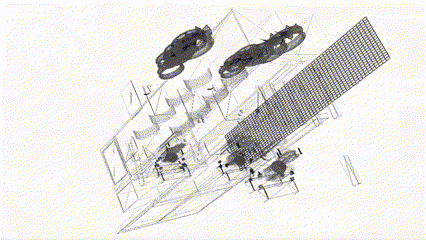How To Calculate Chiller Capacity?
How should capacity be calculated before selecting a chiller?
Cooling Engineer
10/10/20243 min read


Calculating the capacity of a chiller is essential for ensuring that the system is appropriately sized for the cooling requirements of a building or industrial process. Chillers are used to remove heat from a liquid, often water or a glycol mixture, and circulate it through a cooling system. The capacity of the chiller is usually expressed in tons of refrigeration (TR) or kilowatts (kW). Below is a detailed explanation of how to calculate chiller capacity.
1. Understanding the Chiller Capacity
Chiller capacity refers to the amount of heat the chiller can remove from a space or system per unit of time. It is typically specified in tons of refrigeration (TR), where 1 ton of refrigeration is equivalent to the absorption or removal of 12,000 BTUs per hour (British Thermal Units). Alternatively, chiller capacity can also be expressed in kilowatts (kW), where 1 kW equals 3.517 BTU/hr.
2. Formula for Chiller Capacity Calculation
To calculate the required chiller capacity, you need to consider the following equation:
Where:
QQ = Chiller capacity (kW or TR)
WW = Flow rate of the fluid (in liters per second or gallons per minute)
ΔT\Delta T = Temperature difference between the entering and leaving water temperature (in °C or °F)
CpC_p = Specific heat capacity of the fluid (water typically has a specific heat of 4.18 kJ/kg·°C, or 1 BTU/lb·°F)
3.517 = Conversion factor from BTU/hr to kW (for calculating in kW)
3. Steps to Calculate Chiller Capacity
Step 1: Determine the Flow Rate
The flow rate of the fluid circulating through the chiller needs to be measured or calculated. It’s usually expressed in gallons per minute (GPM) or liters per second (L/s). For example, if you are using water and have a system with a flow rate of 100 GPM, convert it to liters per second:
Step 2: Measure the Temperature Difference
Measure the entering and leaving temperatures of the fluid. For example, if the water enters the chiller at 15°C and leaves at 10°C, the temperature difference (ΔT\Delta T) is:
Step 3: Calculate the Chiller Load
Using the flow rate, temperature difference, and specific heat, calculate the heat removal required by the chiller. The specific heat capacity of water is approximately 4.18 kJ/kg·°C. For the given flow rate of 6.28 L/s, you would multiply it by the temperature difference and the specific heat:
This value indicates the chiller capacity needed to handle the required cooling load.
Step 4: Convert to Tons of Refrigeration
To convert the chiller capacity from kW to tons of refrigeration, divide by 3.517 (since 1 ton of refrigeration equals 3.517 kW):
Thus, the required chiller capacity is approximately 2.5 tons of refrigeration.
4. Other Considerations
Chiller Efficiency: Chillers often operate with varying levels of efficiency depending on their design and operational conditions. It's important to account for the efficiency of the chiller, as it can affect the overall performance.
Ambient Temperature: The ambient temperature of the environment where the chiller operates can also influence its capacity. For outdoor applications, ensure that the chiller is rated for such conditions.
Load Variability: The cooling load can vary depending on factors like process changes or seasonal fluctuations, so the chiller should be selected with a margin for peak load conditions.
5. Conclusion
Accurate calculation of chiller capacity ensures that the system is neither oversized nor undersized. Oversized systems can lead to inefficiency and increased operating costs, while undersized systems may struggle to meet cooling demands. By considering factors such as flow rate, temperature difference, and the properties of the fluid, you can effectively determine the chiller capacity needed for your application.










Contact
Evanso Factory:
Atatürk Sanayi Sitesi
Yedi Eylül Mahallesi 5544 Sk. No:46 Torbalı İzmir
